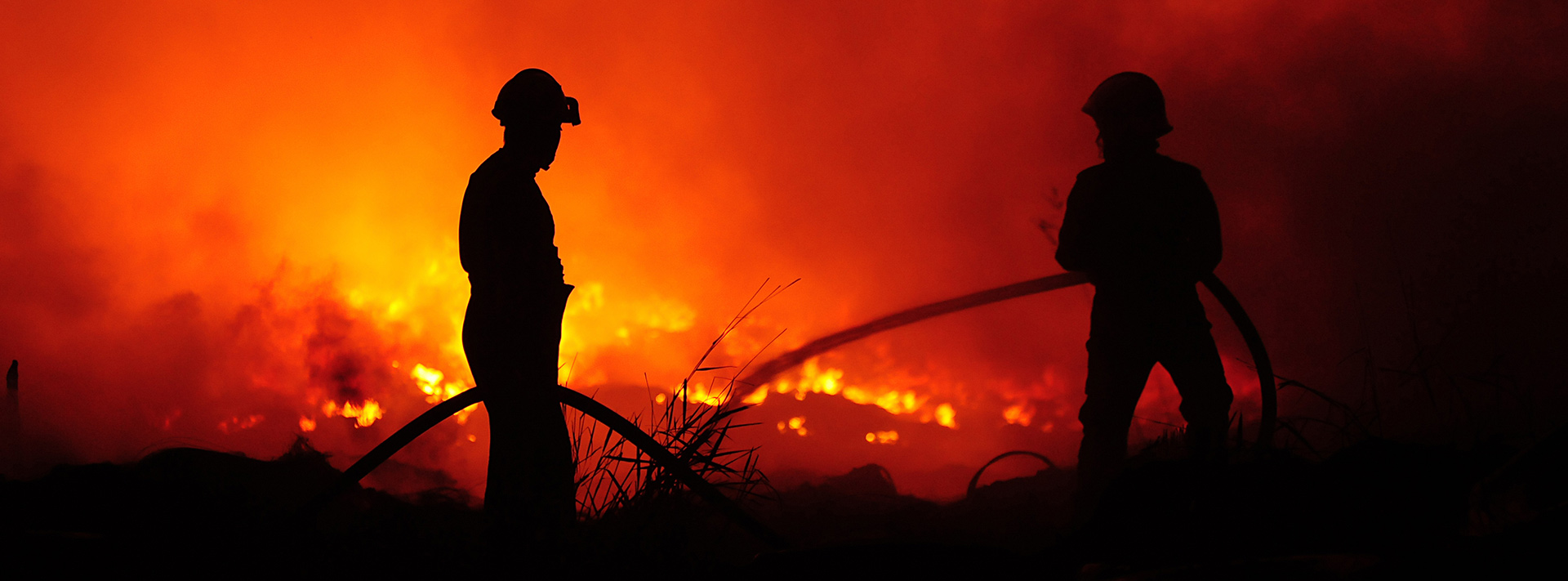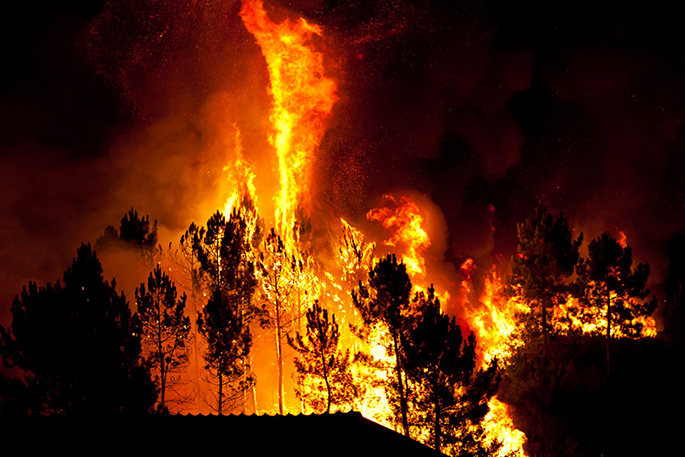
03 Feb Is your building safe from bush fires?
Bushfires sweep through Australia on a regular basis. Only a few years ago in 2013, New South Wales suffered from one of the worst bushfires in recent memory. ABC News reported that hundreds of homes were lost, with almost 100 fires across the state and thousands of people evacuated.
These fires are an expected part of living in Australia, but that doesn’t mean you can’t protect yourself from a lot of the damage, as well as prevent it from spreading to neighbouring structures. Here are a few ways you can ensure that your building is up to bushfire safety standard in NSW.

Bush fires can be extremely destructive. Are you adequately protected?
Roofing
Ensuring that the ceiling over your head is adequate is a part of normal roof maintenance, but there are a few extras involved if you want to confirm that your commercial or industrial building is protected from fire.The NSW Rural Fire Service (RFS) suggests sealing around your roof and all roof penetrations with a non-combustible material, as well as making sure any gutter guards you have are similarly resistant to fire. All sarking you install should be no more than five points below your existing roofing on the flammability index.
If you want to be particularly protected, RFS suggests replacing all of your roof materials with inflammable materials as well. Ensure that you consult with a roofing specialist to figure out any unique issues you may have with implementing these changes.
Walls, windows and doors
Essentially, the RFS advice is to replace walls, windows and doors with materials that are either heat-resistant or heat-immune, such as concrete. However, other suggestions include cladding doors with ‘heat armour’ and fitting windows with toughened glass to reduce shattering.Special heat shutters are also available for doors and windows to help them resist fire.
Get BAL tested
If you are planning to build on land that has been identified as bushfire-prone land, you will need to be tested on this index. It also pays to have this done on existing buildings to see what level of risk you are.These indexes start at BAL-LOW, in which case you are at risk of “minimal attack from radiant heat and flame due to the distance of the sites from the vegetation”. It reaches all the way up to Flame Zone, where extreme measures such as radiant heat barriers and drenching systems may need to be implemented.
To find out how you can become more bushfire safe, speak to the experts at Roof and Building Services.

